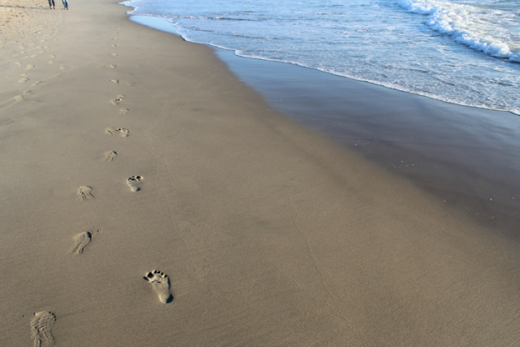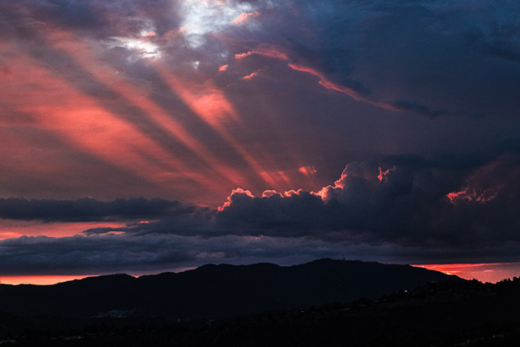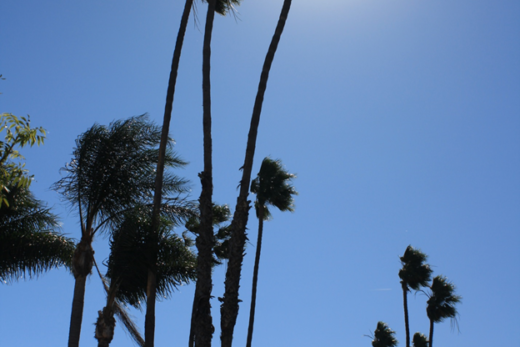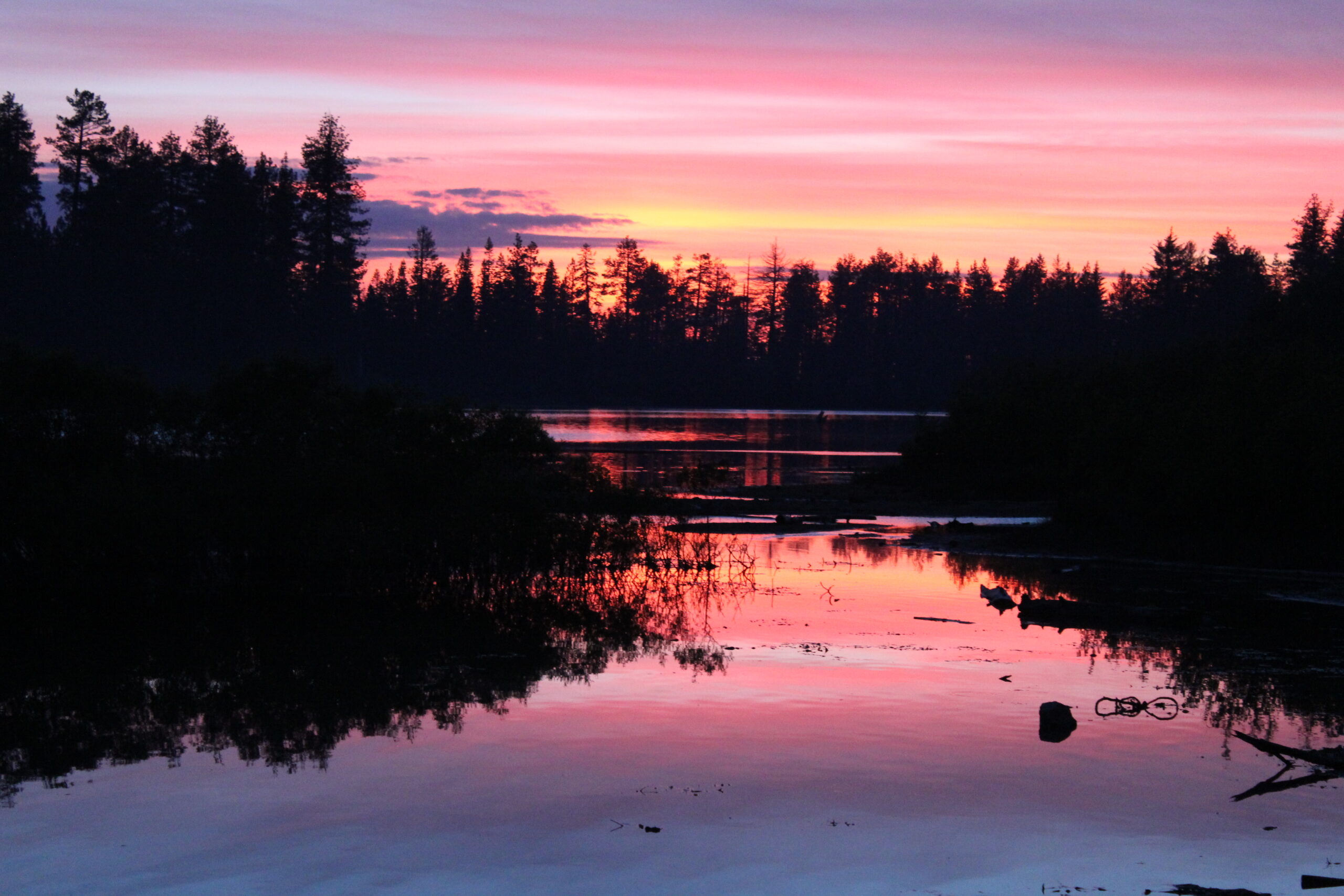
How might our environment influence our mental and physical well-being and performance? The sometimes mysterious power of place and space reminds us that the natural and built environments that surround us exert great influence over our brains and bodies. Our successes and failures in fields such as planning and architecture, and our efforts to build healthier and more efficient living and working communities, shape our perceptions of and interactions with our environment as they impact the quality of our everyday lives.

Cranes lift skyscrapers above already chaotically cramped Phnom Penh streets as Cambodia’s capital, growing to more than 2 million people, expands beyond what Californians might consider unbridled development.
Who hasn’t asked how their lives would be different if they had been born and raised in a different place? This is one of the many reasons we occasionally compare and contrast California with distant and different places; we not only learn more about the other, but we learn more about ourselves and our places in the world. And so in our stories, to satisfy our curiosity about our similarities and differences, we must advance far beyond superficial tourist industry and social media pressures that encourage people to simply “post envy-inducing photos of their glamorous getaways”; instead, we appreciate the substantive learning experiences offered by these distant landscapes and cultures, we understand the powerful connections to California, and we recognize the rapid changes that are transforming all of us and our landscapes.

Southeast Asia’s famous outdoor night markets, such as this one in Phnom Penh, lure hungry locals and visitors to sample their world-famous recipes.
Our population of approximately 7.7 billion people on this Earth continues to grow in ways that challenge us to solve problems, use resources more efficiently, and improve our quality of life. Even as many of the 40 million people in California struggle to solve problems associated with crowding and congestion, we might learn from other places where these problems are far more serious. Here, we take you to Cambodia and Thailand, parts of Southeast Asia where a rich and powerful empire once ebbed and flowed for nearly 600 years, but where horrific conflicts and war brought widespread devastation during the last century.

Choking air pollution rivaling any California city’s worst day is evident as the dry season sun rises over the Mekong River and Phnom Penh, reminding us what can happen without air quality controls.
These regions have been recovering with rampant growth in their cities and a dramatic infusion of people and money from other parts of Asia. Though changes have been slower to impact smaller rural settlements, patterns of unbridled development are crowding major urban areas with economic opportunities, traffic chaos and gridlock, and appalling pollution that can overwhelm the senses, forcing us to ask what can be done better. Californians might learn from a land where rules are bent or even absent within an atmosphere of historical (and sometimes current) foreign intervention, conflict, corruption, and dictatorship, but where most people are working hard to survive each day to improve their lives and communities.

No Chinatown in California can compete with the density and intensity of Bangkok’s crowded recreation of China. The new Coronavirus (COVID-19) outbreak in 2020 (just weeks after this visit) thinned the crowds and devastated tourism and other industries in Asia and in their California counterparts, reminding us of our connections.
Our ties with Southeast Asia have become far more obvious and relevant and practical to Californians during the last several decades. We have already considered in our book and as a story on this web site the largest concentrations of Vietnamese people in the world outside of Vietnam, particularly in the burgeoning Little Saigons of Orange County and San Jose. Our book also surveys the more disadvantaged Hmong population that settled mostly in the Central Valley from the Southeast Asian highlands, especially around Fresno (the largest concentration), Merced, and Tulare. Both of these groups originally escaped as refugees in the chaos, destruction, and death that followed after the United States ended its involvement in the Vietnam War during the 1970s. The largest Laotian populations outside Southeast Asia are also scattered across California.

This bold signage along Hollywood Blvd. announces that Thailand’s people, cultures, and business are well established here, the first designated Thai Town.
Here, we focus on the Cambodian populations and communities that were established when refugees from the war and the brutal killing fields that devastated Cambodia fled to California since the 1970s. And though Thailand was impacted very differently by that war, various Thai immigrant streams, especially since the 1980s, have created their own communities in our state. All of these Southeast Asian groups have established their largest concentrations outside of their homelands right here in California. Here we take you to parts of Southeast Asia and then show you how Southeast Asia has come to California as we consider how growth and development change our sense of place in both places. We were recently reminded of our powerful connections when the new Coronavirus (COVID-19) outbreak crippled Southeast Asia and then rippled through these businesses and communities in California in 2020.

Strip malls, businesses, and shops along Anaheim Street in Cambodia Town in Long Beach offer hints of how Southeast Asia has come to California.
It is easy to contrast physical Southeast Asia from the Golden State. Though you will find scenic sea stacks rising above some California surf, you will not find the steep limestone towers that form islands surrounded by mangrove habitats so commonly highlighted in Thailand’s tourist brochures. And though visitors continue to flock to California’s sunny south coast attractions, our Mediterranean climates are relatively cold compared to the tropical coastlines of Cambodia and Thailand.

The sea eats away at Thailand’s limestone cliffs and caves, carving a coastline quite different from California’s. Dehydrated tropical vegetation on the slopes displays how their dry season in January coincides with California’s peak wet season.
Located around just 10 degrees north of the equator, these places are much farther south than Cabo San Lucas and about the same latitude as Costa Rica and Panama. And so, in contrast to California, their beloved coastlines and crowded cities never get cold as high pressure over Asia dominates their hot and sunny low sun season “winters”; their humid and sticky monsoon season floods their “summers” with heavy rains into September and October. Temperatures near 90 F during the day and the 70s F late at night are common in January, though it is cooler to the north. Warm tropical waters hug their coastlines where you can find coral reefs and other environments never experienced around our cold California current.

In contrast to Southeast Asian limestone stacks and islands, Shark Fin Cove’s (near Davenport) layered sedimentary formations are eroded by cold seas where you will never find mangroves or coral.
Their agricultural products reflect these physical differences. Rice production rules in both Cambodia and Thailand, with an abundance of rubber, sugar cane, coconuts, and what Californians might consider other exotic tropical fruits. You will find some of these fruit trees at local nurseries within diverse Southeast Asian communities that have emerged in Southern California’s coastal plains, but they will often require special attention and a lot of water in our Mediterranean climates.

Steep Anacapa Island emerges from the sea, but that’s where similarities with the Thai coast end. Faulting and folding have lifted the Channel Islands’ ancient volcanic rocks above our cold ocean current and into our Mediterranean climate.
Though more compact Cambodia has a much smaller area and population, its population density is nearly the same as elongated California. Today’s population has grown to over 16 million and the median age remains relatively young: about 25.6 years, though fertility rates and percentage population increase has slowed since the 1980s. And though only about a quarter of Cambodia’s population is considered urban, this might not be evident in the busy congestion of Phnom Penh or even Siem Reap.

As tropical species struggle through the “winter” dry season on the slopes, flatlands in Southeast Asia are typically exploited by locals who grow what Californians might consider exotic fruits and other crops.
In contrast, Thailand’s population of about 70 million is not only greater but considerably denser than California’s, as growing urban populations have recently surpassed rural settlements there. These cities are home to the growing industrial and service industries that are attracting job seekers. Thailand’s economic evolution and growth that has brought millions out of poverty continues far ahead of Cambodia, but both countries have been sources of economic migrations that have produced new enclaves in California during recent decades.

Angkor Ruins look over recovering tropical forests that are getting harder to find in exploited Cambodia, natural and historical landscapes that you will never find in Mediterranean California.
The rate of change especially in Cambodia and Thailand urban areas is breathtaking, literally. Recent rampant growth and development and an infusion of wealth and people from China and India has created unimaginable congestion and pollution in the cities. Each beach town and cherished coastline or island is discovered and then overrun within a few years. (The new Coronavirus outbreak of 2020 temporarily calmed the crowds, but devastated the region’s tourist industry.) Dangerous air pollution chokes the cities when that capping high pressure dominates during the “winter” dry season.

Limestone cave formations such as this one outside Phucket seem similar to California’s isolated caves with stalactites and stalagmites until you notice how they inspired Thailand’s spiritual leaders to inject their cultural imprints.
There are obvious signs of hardworking people running the treadmills toward what they hope will be new economic opportunities. Moms and dads are seen commuting in chaotic traffic on the front and back of one scooter, sandwiching two babies or kids on the same seat between them, all without helmets, scenes unimaginable in the Golden State. Street and open market food vendors compete to offer their delicious meals for what seem to be mistakenly low prices compared to California standards. At night, especially in Thailand cities, the infamous multi-billion-dollar sex industry emerges along their raucous walking streets, fueled by desperate workers and the tourists who seek them. All of this among the gritty dust of the dry season or in the mud and floods of the wet season. Through it all, many people remain friendly and optimistic, while some hear and wonder about stories, real and imagined, of life in a place called California.

The sprawling Angkor World Heritage Site with ruins more than 1,000 years old recalls a great city that grew to around one million people and dominated much of Southeast Asia for about 600 years.
And so, the largest number of people in the world from Thailand and Cambodia has settled in California. And they have brought far more than their revered recipes to the Golden State. The Thai community in Southern California is around 100,000, largest in the world outside Asia. Centered along Hollywood Blvd., you will find the world’s first officially designated Thai Town.

Sidewalks disappear under scooters and other parked vehicles along the gridlocked chaos that defines the streets of central Phnom Penh.
According to the Thai Community Development Center there, the most recent immigrations (since the 1980s) include people who are not refugees, but economic immigrants. These more recent immigrants are mainly poorer and less educated and skilled. Have they found better opportunities and lives in California? The Center writes: “All peoples have a basic right to a decent standard of living and quality of life. Yet, in the Thai and other disadvantaged communities, people are living in substandard housing and lack access to basic health services, education and quality employment. Since its establishment, Thai CDC has addressed the multifaceted needs of Thai immigrants.” Many, particularly within second or third generations, have found success and the California Dream and have become established leaders, sometimes after dispersing into surrounding communities.

These skulls stacked in layers tell stories about the millions of people who were tortured and killed by Pol Pot’s Khmer Rouge in the killing fields during the 1970s, leaving a broken Cambodia.
Cambodia Town in Long Beach is home to the largest concentration of Cambodians (around 20,000 of the more than 100,000 in California) beyond Cambodia. It is clustered in a diverse neighborhood on the east side along Anaheim Street and is also known as Little Cambodia or Little Phnom Penh.

Where the Sab River meets the Mekong, Phnom Penh residents and visitors find cherished open space for walking, recreation, and other outdoor activities.
Large migrations of Cambodian refugees to the United States occurred when they somehow escaped the war’s devastating bombings and the killing fields of brutal Pol Pot’s Khmer Rouge during the 1970s. An even larger wave of refugees (that had survived the destruction and chaos of this war and genocide that claimed millions of lives) flowed in after the Khmer Rouge was defeated around 1979. These people who had experienced unthinkable hardships and torture were originally distributed across the country until they clustered in California communities that included Long Beach and others in the Central Valley. Immigrants continue to struggle along with today’s second and third generation Cambodian Americans who are searching for and sometimes finding their own far-too-elusive California Dreams.

Political signage boasting of one ruler through the last four decades watches over a main artery to Siem Reap. This agricultural service town is typical of many scattered across Cambodia’s provinces.
As in many other ethnic enclaves in the state with their families, organizations, restaurants, shops, and other businesses, community leaders work to improve today’s opportunities and quality of life. From their web site: “Cambodia Town Inc. is a non-partisan, non-profit organization that spearheaded the campaign to designate a 1.2-mile stretch in Long Beach as “Cambodia Town”. Cambodia Town’s mission is to use Cambodian cultural customs and traditions to improve the social and economic well-being of residents and business owners in Central Long Beach. By preserving the Cambodian heritage, we give hope and a strengthened identity to our youth, and by empowering the community we promote the revitalization of our neighborhoods.”

The Cambodian Coordinating Council has struggled to keep the annual parade and New Year Celebration alive within a community challenged to gather necessary financial resources.
Today, community members look back to a country with the longest-serving (since the 1980s) prime minister in the world, sometimes labelled a dictator by the opposition. This might lead some to wonder if the only things Cambodia and California have in common are their first letters and their people who dream to live better lives, whether in a struggling Cambodia or here, in competition for part of that California Dream.

Some local temples sponsored their own floats that decorated the annual Cambodian parade along Anaheim Street. The parade was temporarily cancelled in 2020 due to funding shortfalls.
We hope our abbreviated attempts to show how California meets Southeast Asia will help you better understand the Golden State as it also opens a clearer window to view our diverse communities and our world.

The Cambodian Association of America has been an anchor in Cambodia Town, working with other organizations and assisting the diverse populations in Long Beach.

Looking to the future with their slogan, “Like a lotus, we rise”, Khmer Girls in Action supports Southeast Asian women hoping to build a more sustainable Long Beach.

Palms hang over crystal sands where you can ride horses along Hua Hin Beach, Thailand, and later enjoy several competing outdoor night markets that attract locals and tourists and remind that you are not in California.

Though both scenic coastlines have earned fame from countless movie and TV productions, you will not find anything in California that matches Thailand’s limestone karst towers rising above the shoreline.

Thailand’s famous floating markets and villages, such as this Muslim village with its own floating soccer field, might puzzle most Californians.

Thailand’s tourists are often transported from one popular crowded snorkeling spot to another crowded island, forcing a Californian to search for their nature experience.

Fast food chains and California culture have invaded what were once the most remote Thai islands until you might forget you have traveled thousands of miles to get to Phi Phi.

You’ll have to fight for a quiet space if you take one of the popular island tours that transport Thailand’s visitors to what was once considered paradise and is now being overrun. Just weeks after this photo was taken, a sense of remoteness temporarily reemerged at the expense of a tourist industry devastated by the Coronavirus (COVID-19) outbreak of 2020.

You will find nothing like Thailand’s raucous and legendary walking streets in California, where rules are forgotten and your senses are exhausted among shoulder-to-shoulder nighttime revelers. This is in Phucket.

Skyscrapers dot the coastline in both directions in Pattaya as tourists mainly from India, China, Russia, and Europe clamor to choose their boat tours.

An efficient and lucrative parasailing conveyor belt is organized each morning off this floating island where one tourist is landed and unhinged just in time for the next to be attached and sailed away to view the Pattaya coastline. Can you think of the many reasons you will not find such an operation in California?

Images of Thailand’s King decorate nearly every Thai cultural landscape, including this one that watches over the overcrowded beach and village on Ko Lan Island over 4 miles from Pattaya. It’s nothing like Catalina.

Many Californians are familiar with these popular Thai dishes found at Bangkok’s airport, but the mango sticky rice dessert on the left has to catch your eye.

Contestants line up on Stage One during the annual Thai New Year Songkran Festival in Hollywood’s Thai Town.

A colorful display of flamboyant Thai fashion joins this rock band on Stage Three during the annual Thai New Year festivities on Hollywood Boulevard.

You might have to search for more subtle signs that Thailand has come to California, even in what is considered the largest concentration of Thai people in the country, and where you might find some of the best Thai restaurants.






